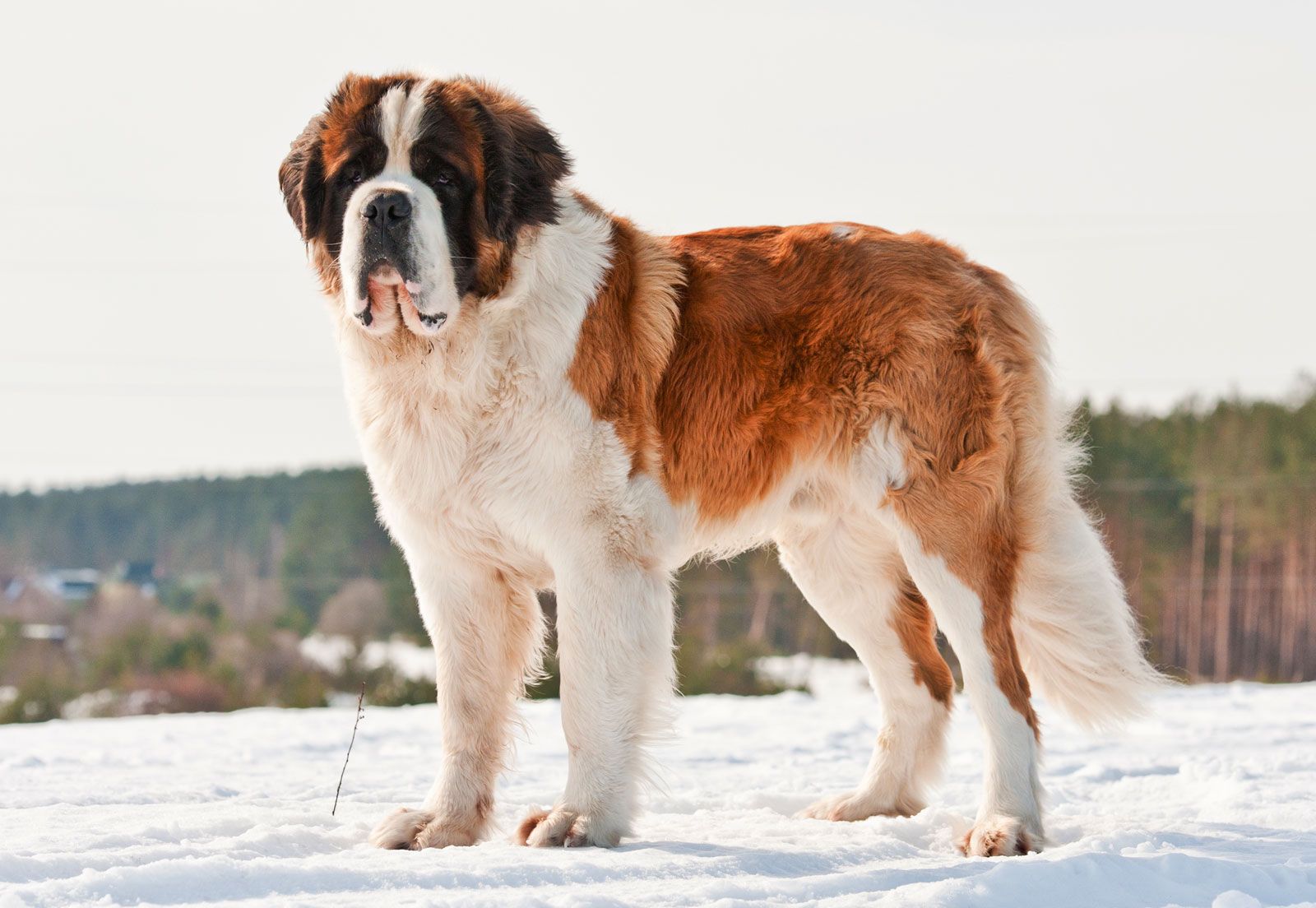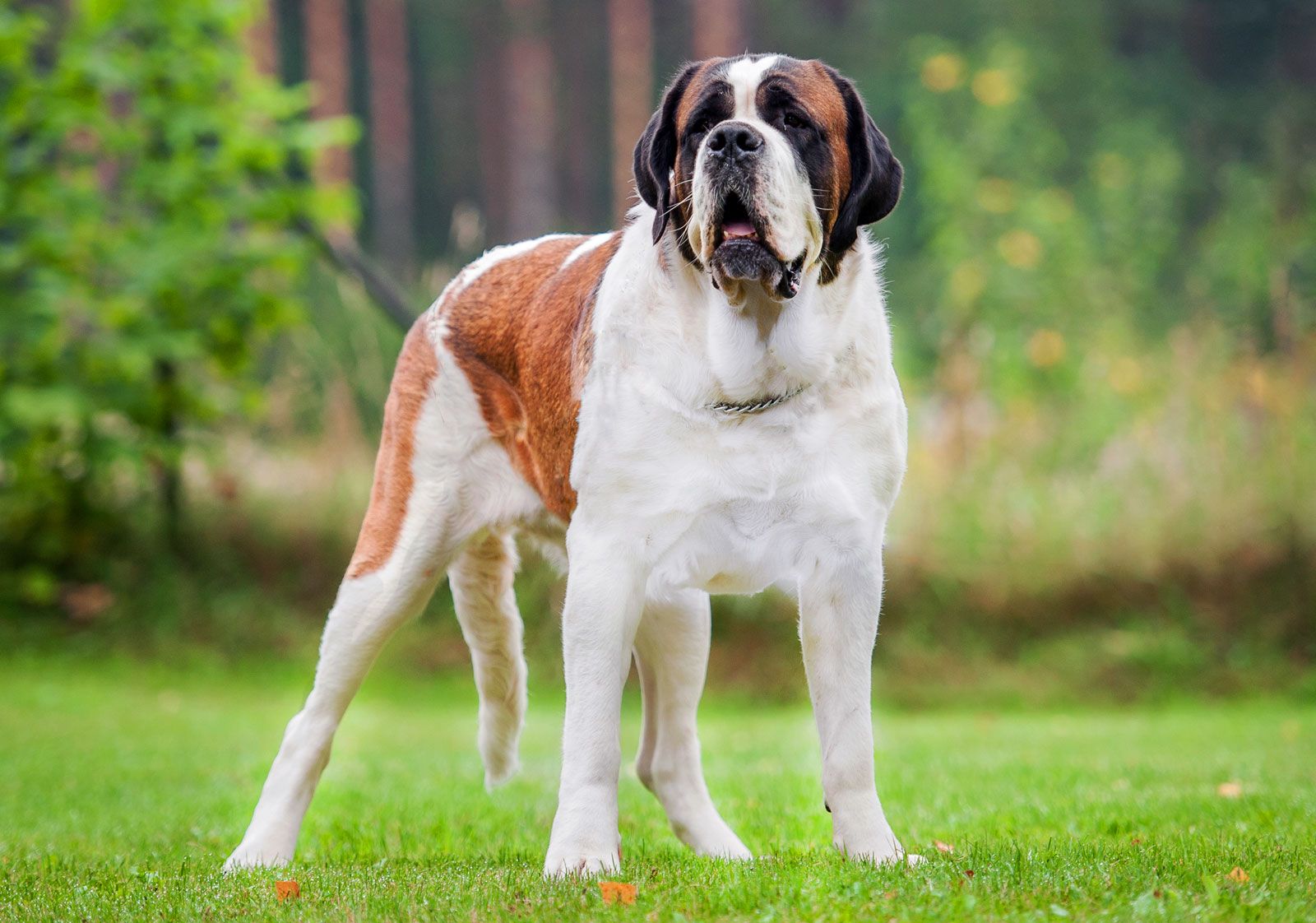
The Saint Bernard, one of the world’s most recognizable giant breeds, originated in the Swiss Alps around the 11th century. Monks at the Saint Bernard Hospice developed these dogs to assist with mountain rescue work, particularly locating travelers lost in deep snow and avalanches. It is believed that the breed descended from mastiff-type dogs brought to the Alps by the Romans.
The dogs quickly became indispensable, saving thousands of lives over the centuries. Famous for their strength, endurance, and uncanny ability to navigate treacherous terrains, Saint Bernards became legends in their own time. Today, they are celebrated not only for their heroic past but also for their gentle and affectionate nature.
The Saint Bernard gained international fame during the 19th century, thanks in part to romanticized tales of their rescue feats. The breed’s popularity surged across Europe and later North America, leading to their inclusion in dog shows and breeding programs. Although their size can be a limiting factor for urban homes, their calm temperament has ensured they remain beloved family pets and companions.
Today, they are often seen in films, cartoons, and literature, further cementing their place as one of the world’s favorite giant breeds.
The Saint Bernard is a true giant, yet despite their size, they carry an expression of gentleness and wisdom.
• Height: 26–30 inches (66–76 cm)
• Weight: 120–180 pounds (54–82 kg)
• Build: Massive, muscular, and powerful
• Coat: Can be short-haired (smooth) or long-haired
• Color: Typically white with red, brown, or brindle markings
• Head: Large and imposing, with a pronounced stop and wrinkled brow
• Eyes: Medium-sized, dark, and expressive
• Ears: Medium, set high, and fall close to the cheeks
• Tail: Long, heavy, and carried low
Their thick coats are designed to protect against extreme cold, and their sheer physical presence is awe-inspiring yet inviting.
Saint Bernards are known for their patience, loyalty, and loving nature. They form deep bonds with their families and are particularly good with children.
• Affectionate: Saint Bernards are famously gentle and loving.
• Calm: Despite their size, they are known for a placid temperament.
• Protective: They are natural guardians but are typically non-aggressive.
• Social: Thrive on companionship with humans and other pets.
• Intelligent: Quick learners but can have a stubborn streak.
Their demeanor reflects their historical role as life-saving companions: steady, reliable, and compassionate.

The Saint Bernard is ideal for:
• Families seeking a loyal, gentle giant
• Households with space for a large dog
• Those who want a protective but non-aggressive guardian
• People looking for a calm, affectionate companion
However, it may not be ideal for:
• Apartment dwellers or homes with limited space
• Owners unwilling to manage shedding and drool
• People who cannot commit to early and consistent training
Saint Bernards, while relatively low-energy, still require proper care and maintenance.
• Exercise: Moderate; daily walks and light play sessions are sufficient.
• Training: Early socialization and obedience training are crucial.
• Grooming: Regular brushing, especially for long-coated types; they shed year-round.
• Living Environment: Best suited to larger homes with yards.
• Feeding: A diet formulated for large or giant breeds to support healthy joints and growth.
They need careful management of diet and exercise during puppyhood to prevent joint problems as they grow.
Saint Bernards are generally healthy but are prone to certain conditions:
• Hip and elbow dysplasia
• Bloat (gastric torsion)
• Heart conditions
• Eye disorders such as entropion and ectropion
Their average lifespan is about 8 to 10 years, with attentive care crucial to their longevity and well-being.

• Newfoundland: Both breeds are massive and gentle, but Newfoundlands are better swimmers.
• Great Pyrenees: The Pyrenees are more independent and territorial compared to the sociable Saint Bernard.
• Bernese Mountain Dog: Slightly smaller and more agile, Bernese are also affectionate but require more exercise.
If you want a loving, patient, and awe-inspiring companion with a heart as big as its body, the Saint Bernard may be the perfect match. They fit best into homes that can accommodate their size and needs for companionship and moderate activity.
However, future owners must be prepared for heavy shedding, drooling, and the costs associated with caring for a giant breed.
Choosing a reputable breeder is critical for Saint Bernards due to health risks associated with poor breeding. Prospective owners should prioritize breeders who perform health screenings for joints and heart issues. Rescue organizations also occasionally have Saint Bernards needing loving homes.
United Pet Club offers microchip registration services and health resources to support your new Saint Bernard companion’s thriving life.